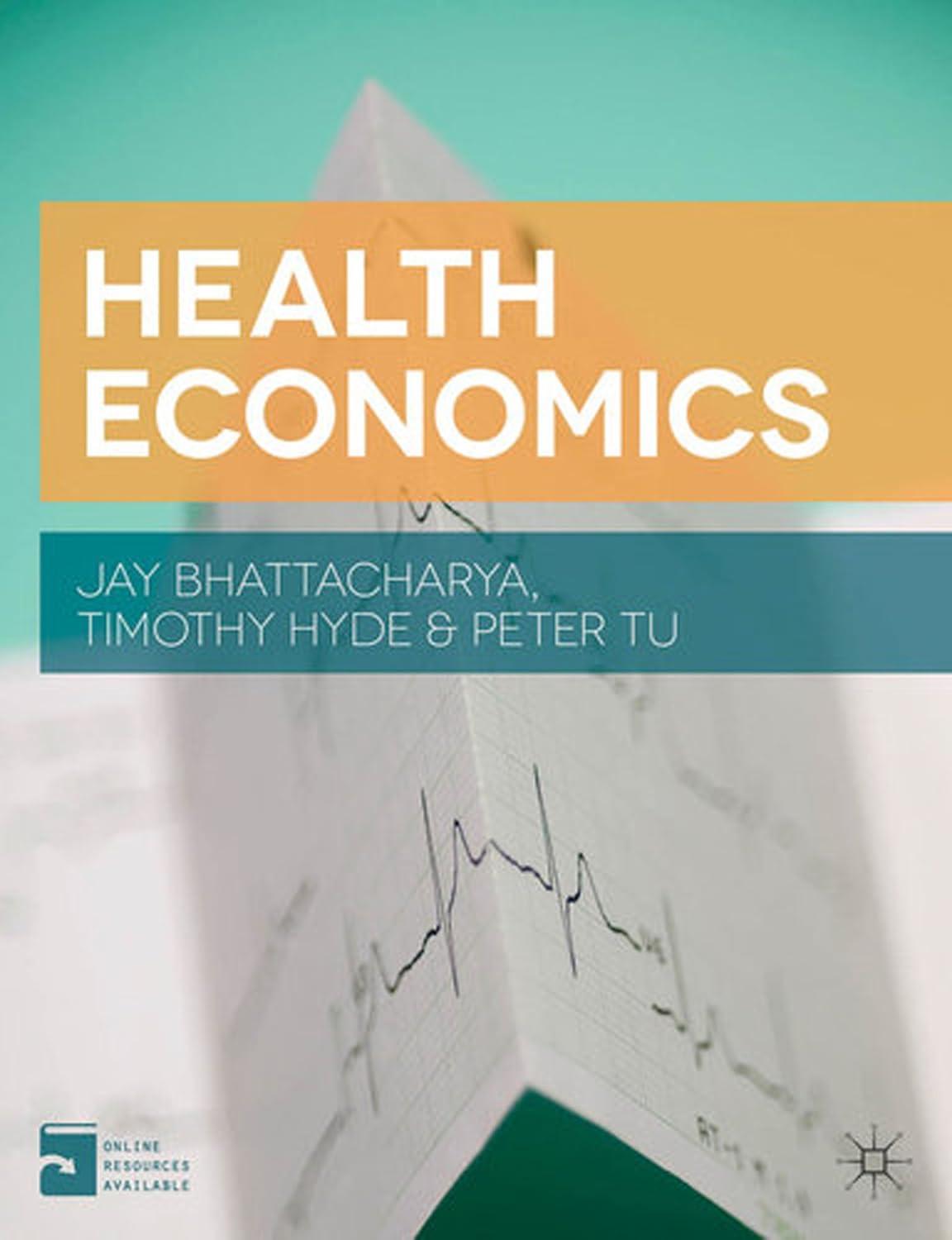In this problem, based on a simplified version of the model in Bhattacharya and Sood (2006), we
Question:
In this problem, based on a simplified version of the model in Bhattacharya and Sood (2006), we will explore how linking employment and health insurance provision can (partially) solve the adverse selection problem if the labor market is competitive. Suppose that there are two types of workers – sickly workers with probability ps of falling ill over the course of the next year, and robust workers with probability pr < ps of falling ill. Employers cannot observe whether a worker is sickly or robust, and because of US law they can only decide to offer health insurance to all of their workers, or none at all.
We will assume that a just-hired employee is less productive than an employee who has more experience; let MPn be the marginal value product of new employees, and MPe > MPn be the marginal value product of experienced employees. In this simple model, marginal value product depends only on experience, not on whether a worker is sickly or robust.
a. Consider an employer deciding whether to hire a new employee who will produce a marginal value product of MP. If the employer offers income and no health insurance, what wage, w, will the employer have to pay the employee in a competitive labor market? What would happen if the employer offered the employee less?
What would happen if the employer offered the employee more?
b. Now let Vr be the premium for a health insurance policy covering a robust person, and let Vs > Vr be the analogous premium for covering a sickly person. What wage would an employer pay a robust worker in a competitive labor market if the employer could observe the worker’s health state? What wage would an employer pay a sickly worker?
c. In this model, employers cannot tell the difference between robust and sickly workers.
That means that they cannot set wages on the basis of worker type. Let θ be the fraction of workers that are sickly at a particular employer. What wage will employers pay workers?
d. Let D be the difference in marginal product between an experienced worker and a new worker (MPe−MPn). Suppose that robust, experienced workers would prefer not to pool with sickly workers at their firm, and so they seek out a new job with an employer who does not offer health insurance. What will be the wage of the robust worker at the new job during the first year there? Keep in mind, these workers will no longer be experienced because they will be adapting to a new firm. Under what conditions will it make financial sense for the robust worker to change jobs? Your answer should be an inequality that includes D, θ, Vr, and Vs.
e. D is a measure of job-specific human capital; as workers learn the job, they become more productive so D > 0. However, not every job or industry has the same value for D. In some lines of work D is low, while in others D is high, simply because of the nature of the work. Given the results you have seen in this problem, in which types of industries – high-D or low-D – would you expect there to be a larger fraction of employers offering pooled health insurance to workers?
Step by Step Answer:






